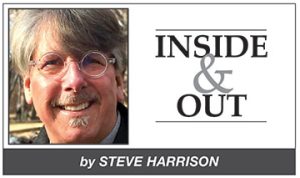Commentary: Hooked on a line
by Steve Harrison
Running errands a couple of days ago, I passed two drive-through Starbucks, each with over ten cars in line. This was midday, not breakfast or lunchtime. Not being a caffeine user I was surprised. A couple of days later I passed the same two coffee shops and there was a similar number of cars in each line. It shocked me that people were willing to wait 10 minutes or more for their pick-me-ups, not to mention spend five to 10 dollars an order.
On the same outing I passed a nondescript strip mall; what caught my eye was a line of 20 people stretching down the sidewalk. Surveying the signage, I ascertained that they were in line for COVID tests. During the last two years we have all been in health-related lines: checking in for appointments, waiting for prescriptions to be filled, and line after line for vaccines and boosters.
Lines indoors, outdoors, and even in our cars. Whoever would have predicted we would receive shots through our car windows, sitting in lines for hours for the privilege of being stuck? Lines have become a way of life and we get used to them early. Lunch lines and gender specific lines to go to recess were part of everyone’s school day. We read about bread lines and soup lines during the Great Depression, though lines for necessities always seemed like something that happened in Europe during wartimes, In-N-Out is not really a necessity no matter what we say.
Living where I can catch glimpses of Mount Baldy Road, I see every snow brings with it never ending lines of cars hoping to see Mother Nature’s display, a rarity in Southern California and only a few miles, but many minutes, away; a 20-minute drive becoming two hours. Read Peter Weinberger’s piece in the January 7th COURIER. The hordes of minivans full of day-trippers have become a common sight, the lack of snow over the last several years has escalated the lines to many mile-long backups and warning signs on the 210 freeway.
I first remember lines taking on an ominous tone when my family lined up at my future high school when I was five or six years of age to get the Polio sugar cube. I don’t remember there being any question, or political overtone, about getting it; my parents were nervous but grateful that they could get the serum and it was free. The gas crisis of the 1970s brought with it something Baby Boomers weren’t used to — waiting in line for something that seemed as necessary, free-flowing and available as water, suddenly available only every other day after sitting in block-long lines. It was a shock. Now standing in line for an Omicron test or snaking our way through Disneyland-like aisles at the Fairplex has become as ordinary and a part of our culture as lunch lines in elementary school.
Once lines were fun. Being first in line to buy a coveted concert or movie ticket, queueing up to get into Dodger Stadium or a movie theatre in Westwood brought with it excitement and enjoyment. Hour-long lines at Disneyland, now commonplace, were a marvel of planning in the 1970s and ‘80s, with old-timers shaking their heads wondering what could be so much fun that we would wait in line for an hour. It was a small world. Now like the gas lines of the seventies we find lines necessary but shocking. This is America; America hooked on lines.










0 Comments